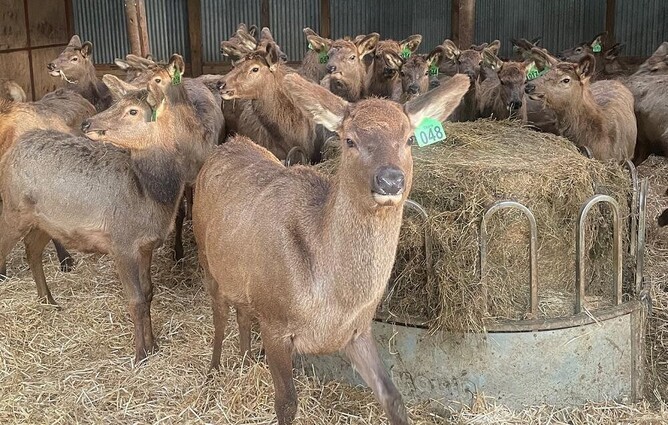Deer have a seasonal growth cycle triggered by changes in day-length.
They have lower feed intake and low liveweight (LW) gain in winter, with shorter daylight length, and high intake and potentially high LW gain in spring and summer, with increased daylight length.
Slow winter growth is a function of both lower appetite and greater need for heat regulation. To meet chilled season targets, deer need to gain a minimum of 185g/d over the autumn.
Weaners are not as sensitive to day-length as older deer, so have the potential to grow well in autumn. There are, however, huge differences in weaner growth rates - from 0-230g/head/day - between farms over the season.
The main factors driving this are feed quality (MJ ME/kgDM and crude protein) and quantity (kgDM).
Autumn weaner growth - the numbers
Weaners require high-quality feed to provide the minimum 11.5MJ ME/kgDM and 18% crude protein they need.
You should feed a minimum of 5kg DM/HD/day (57.5MJME/HD/day) to get good daily weight gains during this period.
With good feeding and management, a 200g/day average autumn growth rate is achievable on good pasture.
On a clover/plantain pasture, you can increase the target by 10-20% to 220-240g/day.
On chicory, red clover or lucerne, increase it by 25-55% to 250-310g/day.
Weaner deer will, on average, grow an additional 25g/day for every MJME/kgDM increase in their diet.
Stag weaners grow 20-50g/day faster than hind weaners.
Wapiti-crossbreds or eastern reds grow 25-50 g/day faster than typical NZ red deer.
It is important to do feed testing to establish the ME, DM and crude protein of the combined feeds you are using.
Weaner deer are highly sensitive to the quality of supplementary feed. As such, you should base your feed purchase decisions on feed quality over quantity.
With daylight length shortening as autumn progresses, weaner growth potential decreases. If weaners have not grown to their potential in the first half of autumn, they most likely won’t be able to catch up in the second half.
Winter feeding
In June and July, the potential for weaner growth is at its lowest. Growth rates will range from 40-120g/day in reds and up to 150g/day in elk crossbreds. Larger weaners are more efficient at utilising winter feed due to their lower heat loss, because of larger body volume/body surface area ratio.
Over winter, you should continue to offer the same amount of at least 5kg DM/HD/day. The feed can be of slightly lower quality during this period, as long as the 5kgDM will add up to 52.5MJME/HD/day.
However, in order to achieve high daily weight gains over winter, a higher quality and higher quantity of feed will be needed - a minimum of 8kgDM/HD/day. To support DM uptake and improve quality, the diet can be supplemented with grain, peas, or deer pellets.
On quality spring pasture, growth rates are relatively consistent at 260-320g/day, regardless of winter liveweight. This means spring slaughter weights and dates can be predicted based on liveweights at the end of autumn and the end of winter.
- Theo Weiggers

